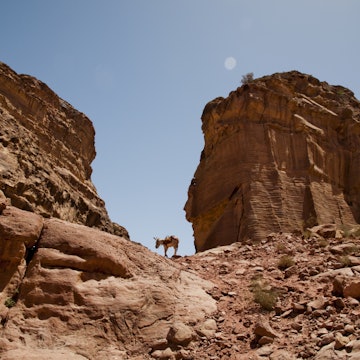

Getty Images/Aurora Creative
Overview
Petra, the great Ancient City that lies half-hidden in the wind-blown landscape in southern Jordan, is one of the world's most treasured Unesco Heritage Sites. Voted by popular ballot in 2007 as one of the 'New Seven Wonders of the World', it has retained its magnetism even through times of strife in the wider region.
Plan your trip with Guide, an AI travel planner!
Create a personalized trip itinerary in seconds using artificial intelligence.
Must-see attractions
Get a book. Get inspired. Get exploring.
in partnership with getyourguide









